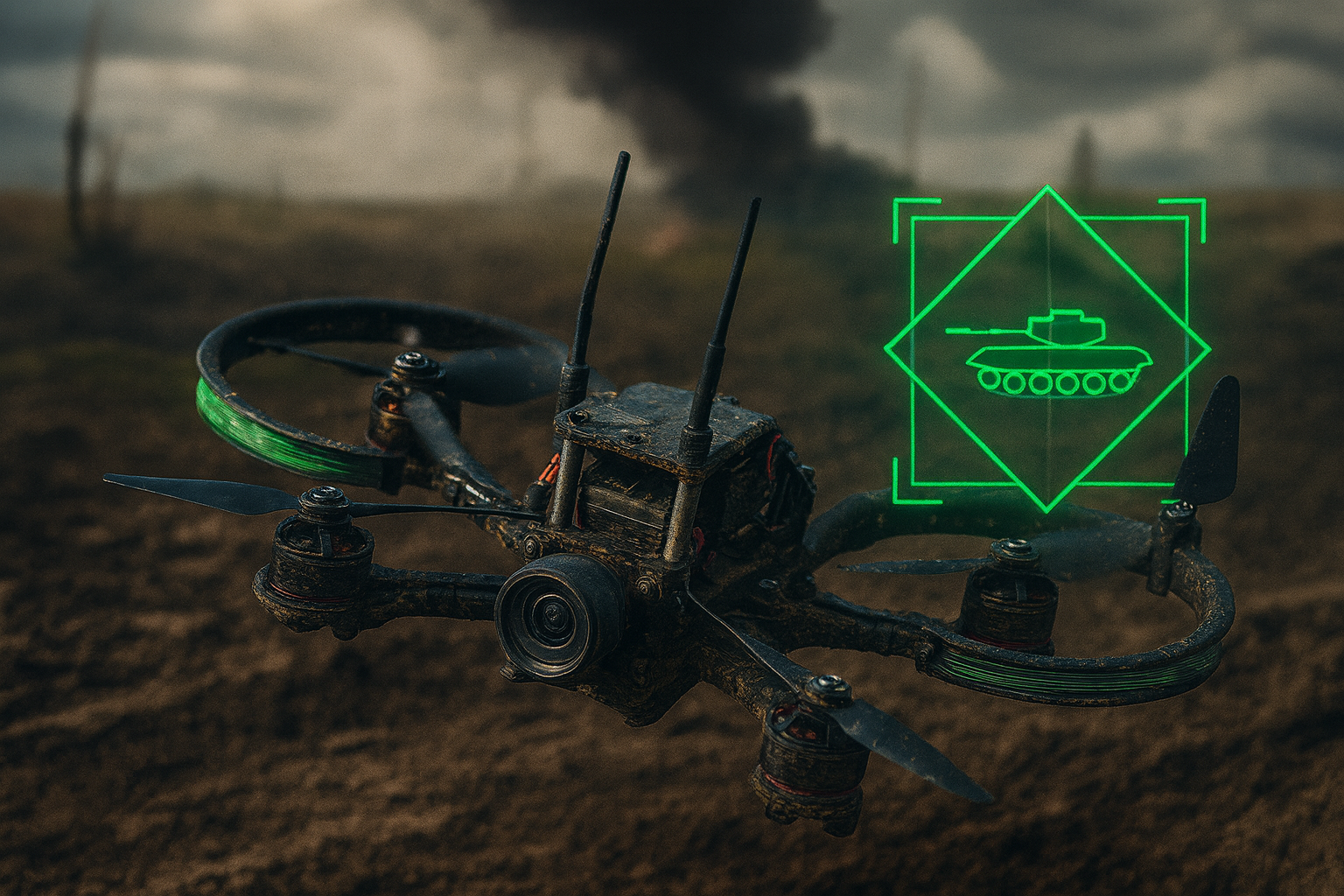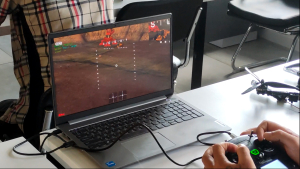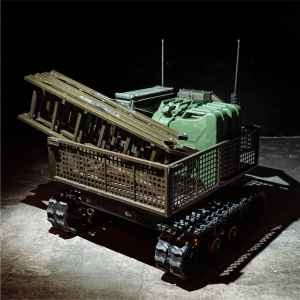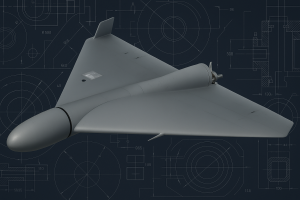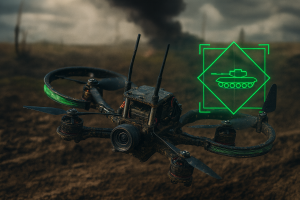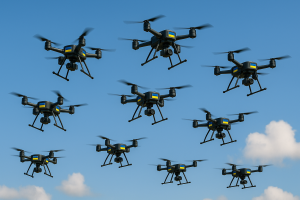Why is this important?
Electronic warfare is one of the main threats to any drone. As a result of electronic warfare measures, a drone can lose its signal, become “blind,” lose control, hover aimlessly, fall, or veer off course.
In search of ways to counteract electronic warfare, Ukrainian developers began actively working on guidance systems that could partially or fully neutralise the effects of electronic jamming and increase the effectiveness of FPV drones.
Since 2023, dozens of teams have been developing guidance systems. Today, Ukraine already has several technological solutions that are successfully used by the military on the front lines. Moreover, according to the technical director of the VGI-9 team, which also developed its own drone optical guidance system, the current penetration level of this technology in the Ukrainian army is approximately 10% and continues to grow.
What is a guidance system?
A guidance system or module is a complex of hardware and software that enables locking onto a target and autonomously delivering a drone, missile, or other weapon to that target. The key tasks of such systems are to avoid the effects of electronic warfare (EW) measures and to improve strike accuracy.
For instance, the VGI-9 system isn’t limited to fixed targets like bunkers, enemy vehicles, or buildings — it can also hit moving targets moving at speeds of up to 80 km/h. In practical terms, it leaves the enemy’s heavy machinery and supply lines with no chance of survival.
You can read an in-depth interview with the technical director of the VGI-9 team about guidance systems, their advantages, and prospects here.
The chain of striking an enemy target with a drone equipped with a guidance system is quite straightforward. The FPV drone operator launches the device and guides it toward the target. After visual identification, the operator locks the target within the guidance system’s sight and activates the appropriate mode with a single button press on the remote control. Thanks to machine vision, the drone independently recognises the target. If communication is lost, it continues moving toward the predetermined point.
When the drone moves out of the electronic warfare zone, communication can be restored. The operator then receives updated information and can adjust the route or cancel the strike command.
See it — lock it — strike it. And if necessary, cancel the strike. Behind this seemingly simple algorithm lies the work of hundreds of engineers and extensive testing.
Is the system an alternative to fiber optics?
The Russia–Ukraine war has become a battle of technologies, demonstrating that there is no single universal solution with absolute advantages or drawbacks that cannot be overcome.
By early 2024, the saturation of the front line with electronic warfare systems had significantly reduced the effectiveness of both Ukrainian and Russian drones.
Although by April–May 2024, Ukraine already had tested prototypes of guidance systems, the Ukrainian military was in no rush to roll out this technology on a large scale. According to the VGI-9 team, the army’s cautious attitude toward guidance systems is largely due to the large number of underdeveloped solutions that developers offered to the military in the early stages of the technology’s evolution.
In contrast, the situation with fiber-optic drones has been different. The Russian army began deploying such drones on a large scale in the second half of 2024. To a significant extent, the success of the operation to push Ukrainian forces out of the Kursk region was the result of units of drone operators equipped with fiber-optic drones — a technology that still has no full-fledged alternative when it comes to protection against electronic warfare.
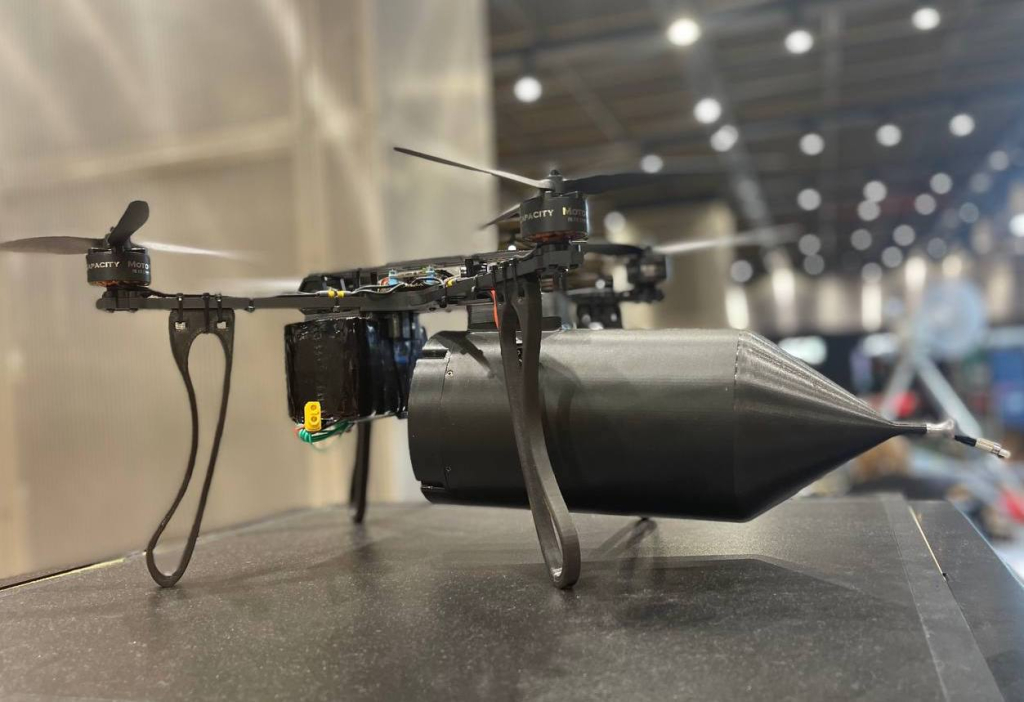
“Cable” drones are unaffected by electronic warfare — they can operate in jamming conditions, complete their missions, and hit their targets. However:
- Their production significantly increases the overall cost of the drone due to the use of a spool of fiber-optic cable.
- The cable itself partially limits the drone’s manoeuvrability, and the fiber often gets damaged during flight, leading to the loss of the drone.
From the standpoint of maintaining a drone’s manoeuvrability and affordability, guidance systems offer clear advantages. Even when they do increase the price, the added cost is roughly $100–150. In the case of the VGI-9 system — already installed on popular drones such as “Vyriy” and “General Chereshnya” — the additional expense has almost no impact on the budget, raising the drone’s price by only up to $50.
What awaits us in the future?
Modern warfare is a battle of drones. Victory can only be achieved by implementing the latest technological solutions. Ukraine’s primary task today is to scale up innovations, particularly the active deployment of guidance systems. The global goal is to equip 100% of FPV drones—which assist in destroying the enemy—with these guidance systems.
One especially difficult challenge continues to be defending against the flood of “Shahed” drones. The number of drones attacking Ukraine’s civilian and military infrastructure every night continues to grow. According to some estimates, by autumn, Ukraine may face attacks involving up to 1,000 drones per night.
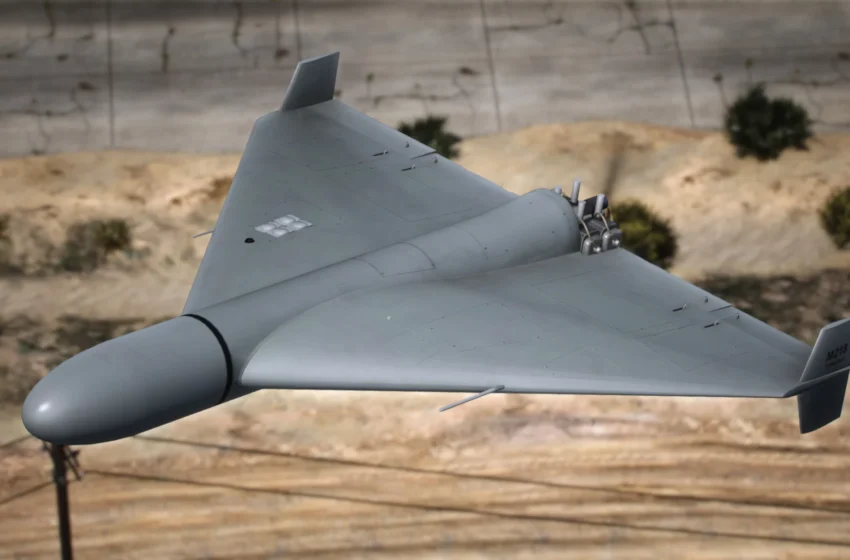
One of Ukraine’s key tools in countering threats has been the development and mass deployment of interceptor drones. In the near future, guidance systems could become the foundation for improving the effectiveness of these “hunters” — drones that destroy enemy UAVs in midair. This is a technically complex task, but entirely achievable. Automatic interception requires instantaneous updates on the target’s speed, direction, and flight path.
Can drone interceptors protect the sky over Ukraine? Read in our recent post here.
While Ukrainian developers search for the most effective technical solutions, we must complete homework assignment No. 1: scale up the deployment of guidance systems and equip all strike FPV drones with them. The next step is adapting these systems to combat aerial threats.
What yesterday was mere fantasy has transformed into today’s reality—and tomorrow, it may well become a pivotal factor in achieving our victory.
Contact us to get detailed information about the VGI-9 drone guidance system.
Follow our updates on social media and YouTube – there you will find:
✅ Exclusive materials on the development, testing, and combat use.
✅ Useful analytical content on the war and the role of FPV drones in modern combat operations.
✅ The latest news and insights from the world of military technologies.
📌 Join us:
🔗 YouTube: VGI-9 on YouTube
📸 Instagram: We are on Instagram
🎯 TikTok: We are on TikTok



